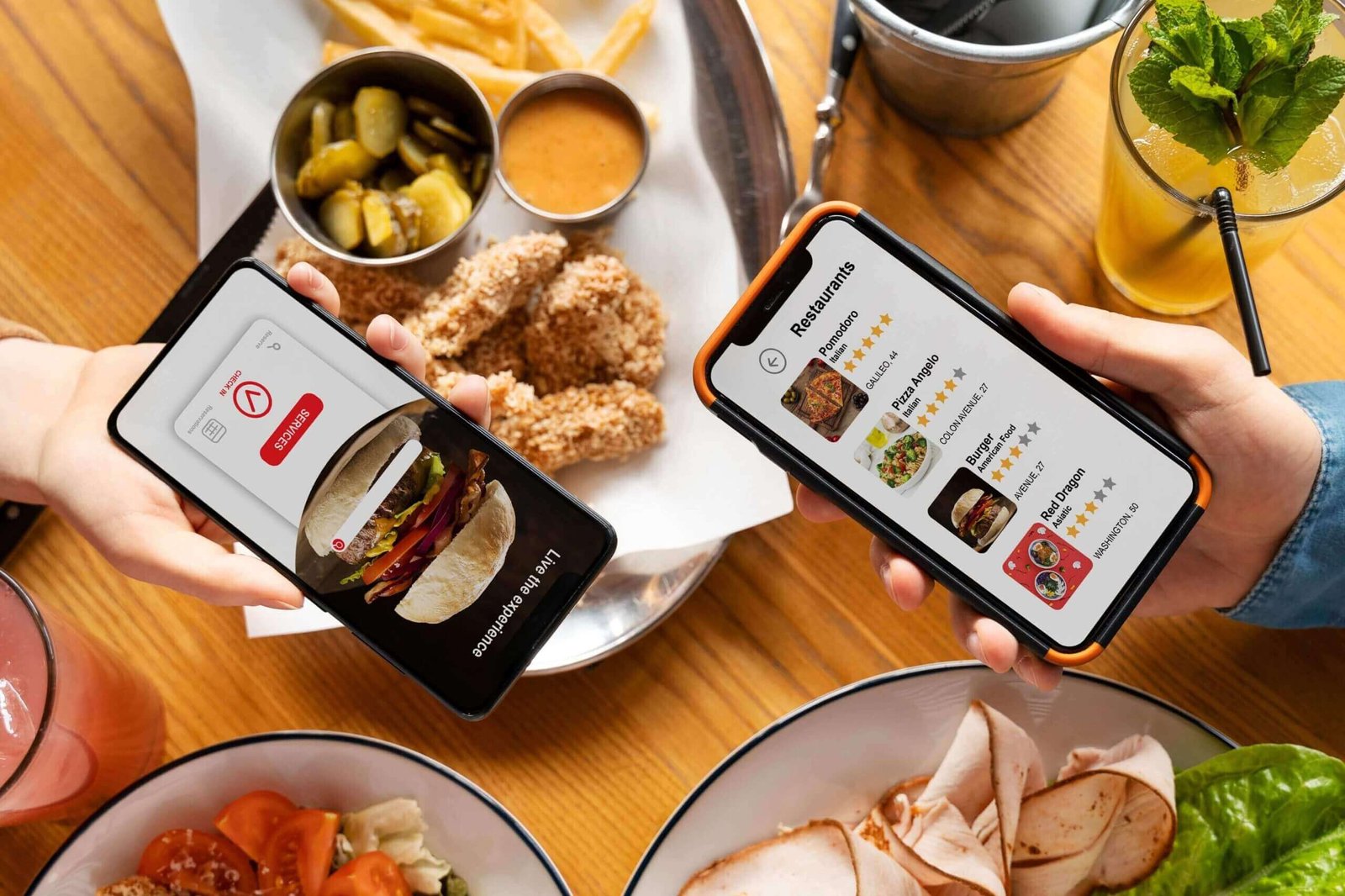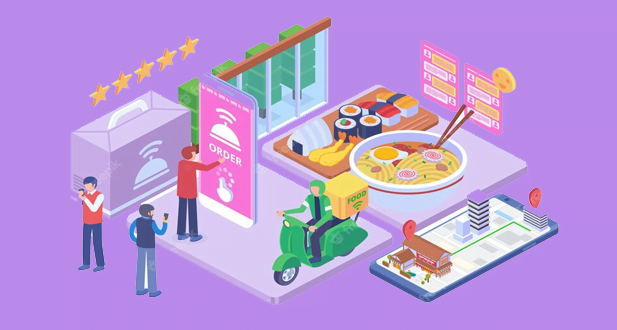A software program known as a recipe management system controls the many connections and procedures of a company’s manufacturing recipes. They keep the recipes on file, allow for recipe change, produce the data needed for production records, and even let you start activities and processes.
What is Recipes Management System?
When connected with a manufacturing execution system (MES) or other higher-level control systems, recipe management systems perform at their best. An MES may include a module for recipe management. A recipe is a collection of directions or procedures used in manufacturing to run a machine, mix components or raw materials in a particular manner and quantity, or otherwise process the materials to produce the desired final result.
Important in restaurants than the food’s recipe
- Restaurant owners need help with recipe consistency, mainly if they operate many locations or chains. The constancy of your dishes, which customers seek and search for each time they visit your restaurant, is crucial to your brand’s survival and sustainability.
- The inability to provide them with the same flavour deters customers and reduces sales.
- Therefore, investing in a methodically developed way to retain a record of your clients’ favourite recipes from your seasoned chefs and the techniques to assure success with every try is worth the time, money, and effort.
- Knowing that your consumers communicate with you through your menu and recipes, you should consider implementing a recipe management system.
- Creating your recipes is handled by a recipe management system, enabling you to log, track, and share infinite nested recipes and associated activities. Your kitchen will operate efficiently and effectively if you have a primary, precise method.
- This function also aids in keeping your kitchen inventory current while accounting for cost measurement and analysis.
Benefits of the recipe management system
- Protection of private recipe information: Your recipes and preparation techniques are only accessible to the people you choose when you digitally store and record them. Your top-secret recipes and the secret ingredient of your most well-known meals won’t be accessible to anybody not approved. As a result, you are ensuring your success and the unique advantages that set you apart from the competitors.
- Removal of processing errors: Automating recipe selection and production records enables you to eliminate any processing mistakes, including those involving the precise recipe materials, preparation techniques, required temperatures, storage techniques, and preparation times, in addition to the tools and equipment needed for the processing stage.
- Current inventory information: Since inventory levels are automatically updated due to ingredient consumption becoming digital in an automated recipe management system, the stock levels you see in the interface are reliable and correct.
- Enhanced standardisation: Since you have a standardised and single source of information and instructions to execute the recipe with virtually little margin of error, consistency in manufacturing is essential to achieving the same needed quality throughout time and among multiple outlets.
- More compliance: A recipe management system keeps track of allergies and nutritional data, enabling you to adhere to dietary guidelines and modify your dishes appropriately, mainly if your menu includes a healthy category.
- Improvements in production management: The execution of recipes is facilitated. The entire manufacturing process is improved by standardising the methods used to produce recipes and monitoring stock depletion in real-time to minimise waste or stockouts. Since they follow a single recipe with detailed instructions, chefs are no longer concerned with the final result. Since they know that stock counts accurately represent the amounts of materials’ availability, they may also work without restriction with those ingredients.
- Increased client satisfaction: Imagine a client remembering the flavour of his favourite meal and coming to your restaurant to delight in it and enjoy a new taste.
Use of Recipe Management Software Techniques
You must incorporate several crucial principles into your daily operations to get the most out of your food recipe management software. Any business that requires such a solution, from food processors to restaurants and everything in between, may use the following in various ways.
1. Properly train all employees: Comprehensive training for all staff members who will use the program is crucial, whether you’re implementing your first recipe management platform or replacing an obsolete one.
2. Make use of tools for calculations and conversions: Making the most of your system’s calculation and conversion features is the most excellent strategy for ensuring accuracy and consistency because exact numbers and measures are crucial to good recipe management. A reliable recipe management system should have you covered whether your staff members need to make precise measurements, convert one unit to another, or solve a more complicated equation for variations or bulk replacements.
3. Get rid of redundant processes and manual entry: Every time one of your workers manually enters recipe data, there is a potential for operator mistakes that might be eliminated by automating the process using your recipe management software. When additional staff members perform the same work on consecutive runs, the problem is exacerbated; therefore, use your system to simplify the process as much as possible.
4. Verify All Inputs: Even though it might seem simple, it is a good idea to frequently review your formulae to ensure that no adjustments were made accidentally. Along with the amounts of the materials needed, pay attention to the spelling of the ingredient names because even a small change might lead to defective products and unnecessary waste that harms your bottom line.
5. Treat all substitute ingredients gently: Food enterprises like yours occasionally need to substitute ingredients in their recipes in a market where supply chain interruptions need to be improved. Remember that depending on the item in issue and the provider who supplies it, some may have allergy problems. It is your organisation’s responsibility to follow any applicable labelling and safety regulations appropriately.
6. Use iterative product development methods: We’ve stressed the significance of maintaining the security and consistency of your confidential recipe data. Still, while developing new products, your inventive brains must be free to experiment with and evaluate many variants to perfect your offers. Give them the freedom to test, analyse, and refine their hypotheses so that they can zero in on the perfect formula.
How to choose the right Recipes Management System
- Recipe security and cost confidentiality: Recipes may be a very sentimental subject for many chefs. The biscuit recipe from Aunt Nancy, the ranchera salsa from Abuela, or the Sunday gravy from Great-Uncle Carmichael. Just like recipes aren’t just about the ingredients, restaurants aren’t just about the cuisine they offer.
- Automated pricing updates for goods: As long as they digitise the data on your invoices, menu and plate costing software eliminates human data entry and tracks product costs. All the information from your invoices is automatically entered into the program when you take a photo of them, allowing you to view them online without manually entering any information. It may not be true magic, and getting started will need some effort, but it should feel similar once you are engaged.
- Kitchen demonstration and instruction capabilities: Raise your hand if you keep your recipes in a sticky 3-ring binder. Raise your hand if you like to type up new recipes or modifications to old ones, print them off, locate the binder, and add the new pages. If you are still raising your hand, you must improve your recipe management skills. One advantage of saving recipes digitally is that they are easily accessible. All of your recipes are kept in the cloud rather than a bulky binder, making them available from anywhere, even with numerous kitchen displays simultaneously.
- Changes that are common across all units: Make sure your recipe and menu cost management system enables you to make changes only once and have them instantly updated across all of your locations if you have several areas. This assists with version control and conveying changes across locales (you’ll still need to let them know, at the very least).
When you have numerous units, you’ll also want to ensure that the things you buy are allotted to only that store.
This is another instance in which classification at the component level (rather than by vendor item name) has a significant influence.
- Menu engineering and analysis: To properly maximise the profitability of your menu, you must go beyond menu and plate expenses. If you attended culinary school, you might be familiar with plough horses, stars, dogs, and riddles and how they function in menu engineering. If you haven’t, don’t worry; we have a breakdown article to take care of you.
To precisely track sales per menu item through what is entered daily, look for a menu costing and recipe management program that interfaces to your POS through PMIX mapping.
- Simple to import and upload: If a recipe is handwritten (or not written down at all! ), digitally transcribing it might be a significant obstacle to tracking it. Inputting recipes will be much simpler if your recipe management software interacts with your invoicing since your items will already be in the software. To search and select the goods you want, all you have to do is type.
Depending on your menu, this might take a while. Some recipe management systems provide services to import your recipes if time is a more significant obstacle than money.
- Management of preparation and menu items: You’ll want a system that organises recipes according to use case or kind if your menu is more extensive to save time. For instance, you may avoid repeatedly inputting ingredients if you have prepared products like sauces since you can build the recipe once and then add it to plates.
Due to the ability to zoom into a more precise perspective, this distinction is beneficial for examining food prices or category performance.
- Conversions and scalability: Some people have excellent arithmetic aptitude from birth and can mentally divide and multiply, like Russell Crowe in A Beautiful Mind. Scaling recipes can be a bit challenging for those of us who lack John Nash’s intelligence.
To scale recipes by volume or serving size, we advise you to seek a recipe and menu cost management system. This way, you won’t have to worry about making mistakes with mental math while creating a triple batch of port wine reduction since you’ll know precisely how much of each item to use!
Choosing the best recipe management system can significantly enhance your cooking experience, streamline meal planning, and simplify grocery shopping. Here are some key considerations and features to look for when selecting the perfect recipe management system:
1. User-Friendly Interface
- Ease of Use: The system should have a clean, intuitive interface that is easy to navigate. This ensures that you can quickly find and use the features you need without getting frustrated.
- Accessibility: Look for systems that are accessible on multiple devices, including smartphones, tablets, and computers. This allows you to access your recipes wherever you are, whether in the kitchen or at the grocery store.
2. Recipe Importing
- Import Options: The best systems allow you to import recipes from various sources easily. This can include websites, blogs, and social media platforms.
- Manual Entry: Ensure that the system also allows for manual entry of recipes, giving you the flexibility to add family recipes or ones that are not available online.
3. Organizational Features
- Categorization: Look for a system that offers robust categorization options. This can include organizing recipes by meal type, cuisine, dietary restrictions, or cooking time.
- Tags and Filters: The ability to tag recipes and use filters can help you quickly find what you’re looking for, making meal planning more efficient.
4. Search Functionality
- Advanced Search: A good recipe management system should have a powerful search function that allows you to search by ingredients, recipe names, or even cooking techniques.
- Voice Search: Some advanced systems offer voice search capabilities, adding a layer of convenience when your hands are full.
5. Meal Planning and Grocery Lists
- Meal Planner: An integrated meal planning tool can help you organize your meals for the week, ensuring you have a balanced diet and reducing the stress of last-minute meal decisions.
- Grocery Lists: The ability to generate grocery lists from your meal plans is invaluable. This feature should allow you to check off items as you shop and make adjustments as needed.
6. Nutritional Information
- Nutrient Tracking: If you’re health-conscious, choose a system that provides detailed nutritional information for each recipe. This can help you keep track of your caloric intake and nutritional balance.
- Dietary Adjustments: Some systems can suggest modifications to recipes to fit your dietary needs, whether you’re looking to reduce sugar, increase protein, or avoid certain allergens.
7. Integration with Other Tools
- Smart Devices: Look for systems that integrate with smart kitchen devices like smart ovens, refrigerators, and sous vide machines. This can streamline the cooking process and ensure precision.
- Fitness Apps: Integration with fitness and health apps can help you maintain a holistic approach to your wellness, connecting your diet with your exercise routine.
8. Community Features
- Sharing: The ability to share recipes with friends and family can be a wonderful feature. Some systems allow you to share via social media, email, or within the app’s community.
- User Reviews and Ratings: A community of users who can review and rate recipes can provide valuable feedback and help you find the best recipes more easily.
9. Customization and Personalization
- Recipe Modifications: The system should allow you to modify recipes and save these changes. This can include adjusting serving sizes, ingredient substitutions, and cooking times.
- Personal Notes: The ability to add personal notes to recipes can help you remember adjustments you made or tips for improving the dish next time.
10. Cost and Value
- Free vs. Paid: While free systems can be sufficient for basic needs, paid systems often offer more advanced features and better support. Evaluate what you need and whether the cost is justified.
- Trial Period: Many paid systems offer a trial period. Take advantage of this to see if the system meets your needs before committing financially.
11. Customer Support
- Availability: Reliable customer support is essential, especially if you encounter technical issues. Check if the system offers support via email, chat, or phone.
- Resources: Look for additional resources such as FAQs, user guides, and tutorial videos that can help you get the most out of the system.
12. Data Backup and Security
- Cloud Backup: Ensure that the system offers cloud backup options so you don’t lose your recipes if you change devices or experience a hardware failure.
- Privacy: Check the privacy policies to ensure your personal data and recipes are secure and not shared without your consent.
Conclusion:
When it comes to the administration of costs associated with recipes and menus, not all of the available options are made equal. Your company’s demands, such as whether you’re an independent or mom-and-pop shop still going strong or a multi-unit firm focused on development and growth, will ultimately determine which product is the best for you to purchase. Food prices are more volatile than ever, and if you want to keep one step ahead of the competition, you’ll need a recipe and menu cost management system that provides up-to-date information.
A software program known as a recipe management system controls the many connections and procedures about a company’s manufacturing recipes. They keep the recipes on file, allow for recipe change, produce the data needed for production records, and even let you start activities and processes.
The fundamental goal of utilising a standard recipe is to generate consistently produced items regardless of who makes them. Additionally, it increases purchasing effectiveness.
Another fantastic method for sharing recipes is blogging. A personal recipe blog for intimate friends and family can be readily made. You may store and share your ancestors’ recipes on such a blog. You may also include images and videos of older family members preparing meals.
Generations pass along recipes carefully curated with a lot of love and care. Cookbooks teach readers the value and fun of cooking while allowing us to explore these customs and cultures.




